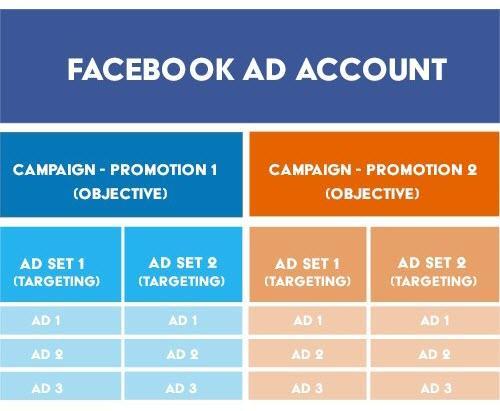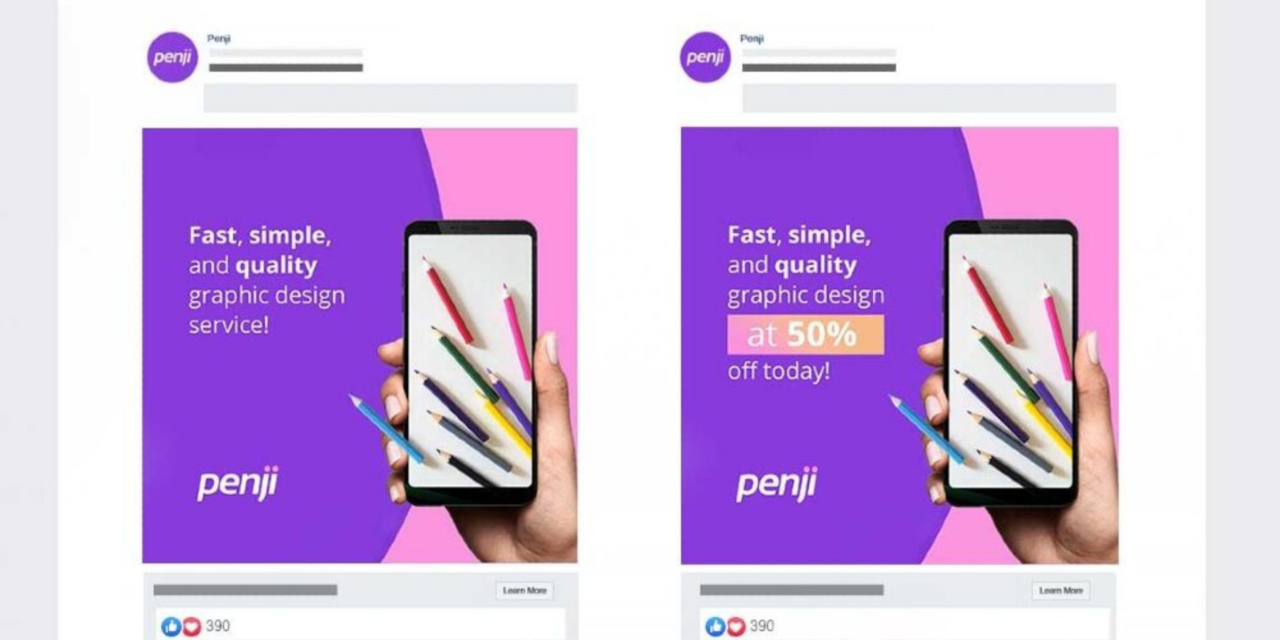Using Facebook ads to promote your company on Facebook. That’s not it. The point is, there’s a lot to learn if you want to master Facebook ads.
To be honest, it’s quite overwhelming.
This brings us to the purpose of this post. Where in the world do you even begin?
We’ve finished the grunt work. We sifted through our Facebook ad canon and selected the best of the best. The diamond patch’s flawless diamonds. The cream of the crop. Consider this blog to be a portal to the most comprehensive Facebook ad training manual on the planet. Each useful tip links to a high-quality, in-depth resource on how to incorporate that tip into your new or existing Facebook ad strategy.
Does that sound feasible? It is! Let’s grab it and tear it.
FACEBOOK AD TYPES
1. Use Facebook Canvas Ads to Create an Immersive Experience

If you’ve seen demos of Facebook Canvas Ads in action, you may have been intrigued by the functionality but turned off by the lengthy creation process. Canvas advertisements are a mishmash of videos, still images, text, call-to-actions, and other interactive collateral. Is the effort worth the end result?
Yes, according to statistics.
Canvas ads, when done well, can be extremely engaging: 53% of users who open a Canvas ad view at least half of it, and the average view time per ad is 31 seconds. What’s the reason? The ability to combine multiple ad types (carousel ads, video ads, single image ads, etc.) allows for unparalleled storytelling—you can truly immerse the user in your brand experience.
The creation process is also extremely templated, with the user simply dragging collateral into the Facebook UI and dropping it in the appropriate places. The following are examples of templates: Gain New Customers (best for customer acquisition), Sell Products (best for eCommerce), and Promote Your Company (best for driving brand awareness).
The other major benefit of the Canvas ads format is speed: your products and lead forms open directly within the Canvas and almost instantly. There’s no need to redirect to those annoying, slow-loading landing pages. Customers effortlessly skip a critical stage in the purchasing process.
2. Use Facebook Carousel Advertising to Highlight Your Goods
Carousel advertisements are designed to present many e-commerce goods (or sections of the same product) in a single, swipe-able ad.
Carousel advertisements allow marketers to display up to ten images or videos in one ad, each with a separate CTA, and link to various landing sites from each panel of the Carousel. They’re effective on both desktop and mobile, and they’re accessible for most Facebook ad objectives—so don’t feel limited if you’re not looking for online sales.
3. Increase Your Reach By Using Page Post Engagement Ads.
You have a decent number of page likes on your company’s Facebook page, but are you having trouble reaching the bulk of your followers? It’s a typical issue for many firms.
No matter how interesting your Facebook postings are, Facebook’s algorithm only permits your organic posts so much exposure—for example, if you have 100 page likes and publish anything organically to your account, just 20 or so of your followers may see it. Page post engagement advertisements provide a reliable solution.
Just choose the “Engagement” marketing aim to create engagement advertising. In this scenario, “engagement” comprises comments, shares, likes, event reactions, and offer claims. By running engagement advertisements, you can reach out to people who already like, comment, and connect with your content. You may also use Facebook’s plethora of targeting choices to get your material in front of new sectors of the population who are equally likely to like, share, and so on.
4. Facebook Video Ads: Everyone Is Doing It, Should You?

What makes Facebook video advertisements so appealing? For starters, customers who watch videos are 1.81x more likely to buy than non-video watchers. Another advantage is that the setup is as easy as that of an image ad. The video creation process alone may deter businesses from entering the video ad game—but even those advertisers may soon find themselves at a disadvantage. As of June 2017, views of branded video content on Facebook had climbed 258%, and over 500 million people watched video on Facebook every day.
Facebook video commercials may last up to 240 minutes, so there’s no limit to how much narrative you can put into a single ad spot. That said, you might be better off keeping it short and simple and adding captions—captioned video advertising improve video watch duration by an average of 12%, according to Facebook.
5. Make Facebook GIF Ads Simple.
Basic logic dictates that the shorter a video, the simpler it is to get prospects to watch the full thing. Statistics, it turns out, say the same thing:

It falls well within the purview of the Graphics Interchange Format (GIF). Why develop a 5-minute movie to explain your brand’s narrative when you can elicit the desired emotion in less than 10 seconds? GIFs exist in the area between photos and videos—they’re essentially very short videos that play on a loop but don’t take nearly as much time and effort to create.
6. Use Facebook Lead Advertising to Generate Leads

Facebook lead advertising, like Canvas ads, are a mobile-only solution designed to save marketers from sending prospects to time-consuming mobile landing pages. Lead forms are excellent for collecting names and job titles, phone numbers, addresses, demographics, and other data that may be utilized to promote or remarket your products. Because your lead form opens directly within the Facebook app, your prospects do not need to visit your website to supply that information.
Lead advertising are inexpensive and effective, and the contact information gathered may be utilized to generate bespoke and lookalike remarketing audiences.
YOUR FACEBOOK ADS ACCOUNT
7. Use Facebook Analytics To Get Data.

Facebook Analytics has a variety of handy tools that allow you to observe how prospects and customers engage with your website, app, Facebook page, and so on. But, during F8, Facebook’s annual developer conference, the company revealed a number of new capabilities that will be added to Analytics’ already extensive portfolio. The following were the most important:
A new smartphone application. You can now analyse stats from your sponsored social ads on your mobile device, just like you can with Google Analytics.
Filters that detect themselves. Employ artificial intelligence to discover repeated user pathways on your website or app.
Individualized insights. Add events to Facebook Analytics to create personalised insights.
Of all, there can be no significant tracking without the Facebook Pixel.
The Facebook Pixel is a single line of code that, when placed on your site’s pages, allows you to measure and credit conversions—whether they be site visitors, content downloads, or product purchases—to your advertising.
8. Create Your Account Correctly

Are you confident in your AdWords skills and believe they will translate to success with Facebook ads? Not so quickly. There are some significant distinctions between AdWords and Facebook account formats that must be understood in order to get the most out of each platform. For one thing, Facebook budgets are managed at the ad set level rather than the campaign level, giving you far more control over how much you spend on individual audiences. Our recommended recipe for account structure success looks something like this:
- Choose a campaign based on your unique marketing goal. Create two separate campaigns if you want to drive visitors to your site as well as app installations.
- Separate ad sets depending on precise targeting and budgets.
- Run those ad sets through your existing campaigns to get the lowest cost-per-acquisition (CPA).
The Facebook Pixel is a single line of code that, when placed on your site’s pages, allows you to measure and credit conversions—whether they be site visitors, content downloads, or product purchases—to your advertising.
9. Don’t Worry About a Limited Budget
Building a successful, optimised Facebook campaign is less about having a large budget and more about making the most of the one you have. With limited resources, optimisation becomes increasingly vital. Therefore, in order to completely optimise your new and old campaigns, you’ll need to be rather familiar with Google Analytics.
FACEBOOK AUDIENCE TARGETING
11. Understand Facebook Remarketing

You know that alcohol cruise promotion that follows you throughout the internet? What about that gorgeous pair of shoes you placed to your basket but forgot to buy? It is called remarketing. Because remarketing allows you to target visitors based on an activity they’ve already performed on your website or social networks, it’s quite successful. As a result, you have the advantage of knowing how they’ve already connected with your business and where they are in the funnel.
11. Learn About Custom Audiences
You should become familiar with Custom Audiences if you want a more in-depth grasp of Facebook remarketing. Custom Audiences enable you to target five distinct user groups:
- Customer Information: Target current Facebook accounts by matching email addresses, phone numbers, and Facebook user IDs.
- Traffic To A Website: Those who have visited your website or certain sections of your website should be targeted.
- Activity in the App: Those who have launched or interacted with your app or game should be targeted.
- Offline Action: Those who have interacted with your company in-store, via phone, or through other offline channels should be targeted.
- Engagement: Make a list of people who interact with your Facebook or Instagram material.
To refine your audience, you may add layered behavioural, demographic, and interest targeting to each of these groups (which is highly recommended). Don’t only target prospects and customers who have previously connected with your business; overlaying standard Facebook targeting on top of such lists will help you reach the most qualified prospects.
The essence of Facebook remarketing is knowing how to build and execute ads utilising Custom Audiences. For information on how to get the most out of your Custom Audiences, as well as how they will change in the coming months—due to the GDPR (General Data Protection Regulation), Facebook is implementing a Custom Audiences permission tool that will require you to provide proof of consent before using Custom Audiences.
12. Play with Lookalike Audiences

Lookalike audiences on Facebook exist between multilayer (behaviour, interest, and demographic) targeting and remarketing (utilizing Custom Audiences). Developing lookalikes is the process of using the same information that would be used to generate Custom Audiences to create audiences that have similar features but represent a different section of prospective clients. These prospects have not yet had any interactions with your brand. Nonetheless, they are comparable to those who have.

Lookalike audiences, like Custom Audiences, work best when combined with multilayer targeting. Applying layered targeting to lookalike audiences is a very efficient technique to restrict audience size—for example, if you are concerned that your lookalike audience is unqualified or too large for your budget. Facebook also allows you to manually raise the size of your audience on a sliding scale from 1 to 10…
As a result, you may build additional audiences depending on your first (or “seed”) audience. This option allows you to reach out to fresh prospects who are increasingly distinct from those in your original lookalike audience but are still similar enough to justify investigation.
13. Use the Facebook Pixel
This is an important Facebook advertising tip. What is the Facebook Pixel, exactly? Back in 2015, marketers had to post many pixel codes on their website to measure various conversion metrics. Each new landing page for each new campaign required a new pixel—a sustainable technique in small doses, but somewhat tedious as your ad strategy grew larger and more complicated. Here comes Facebook Pixel.
14. Use Audience Insights to Create New Audiences

The strength of Audience Insights boils down to discernment—or, as Larry Kim would put it, distinguishing between the donkey (average-to-below-average) and unicorn (high-performing) audiences.
Audience Insights is a tool that allows you to create new audiences using self-reported Facebook data (information provided by Facebook users when they fill out their profiles) and third-party data (information such as household income, purchasing behaviour, and so on obtained from external partners). Where did this information originate from? Facebook has three choices for gathering insights: from everyone on Facebook, those linked to your Page, or an existing Custom Audience.
Similarly to the Custom Audience construction procedure, you’ll want to overlay interests (like competitor pages!) and behaviours atop your audience to improve your insights as much as possible.
15. Facebook Interest, Behavior, and Demographic Targeting
If you’re a newer company with limited internet traffic, you generally don’t have many remarketing choices. If that’s the case, your best choice is to use what’s known as manual or layered targeting. Manual targeting is the process of developing audiences based on the following criteria:
- Behaviors: Reach out to users based on their purchasing habits, intent, device usage, and other factors.
- Interests: Reach out to individuals based on their interests, activities, favourite pages, and closely connected topics.
- Demographics: Reach users based on their location, age, gender, language, relationship status, and other factors.
When establishing audiences with layered targeting, the strategy is to start wide and then gradually work towards more qualified, focused subgroups. Because you’re beginning from scratch, your CPC will most certainly be greater than if you were remarketing to a tailored audience, but layered targeting may be an efficient approach to hack your sales funnel when done right.
CREATING EFFECTIVE FACEBOOK ADS
16. Learn About Size and Specifications

What could be worse than sending out an ad only to discover that a section of the lead picture was omitted owing to faulty specifications? Numerous things, most likely, but you shouldn’t do it. Here’s a short rundown of the ad specifications you should be aware of:
- Dimension of image ads: 1,200 x 628 pixels. Ratio: 1.91:1. Text length is 90 characters. Headline length is 25 characters. 30 characters are allotted for the link description.
- Video ads: Formats:.mov and.mp4. Ratio: 16:9. Minimum resolution: 720p. Maximum file size is 2.3 GB. Size of thumbnail: 1,200 x 675 pixels. Text length is 90 characters. Headline length is 25 characters. 30 characters are allotted for the link description.
- Carousel advertisements: Picture resolution: 1,080 × 1,080 pixels. The image/video ratio is one to one. Text length is 90 characters. Headline length: 40 characters. Link description is limited to 20 characters.
- Slideshow advertisements: Dimensions: 1,289 x 720 pixels. The following ratios are available: 16:9, 1:1, or 2:3. Text length is 90 characters. Headline length is 25 characters. 30 characters are allotted for the link description.
Following these guidelines will guarantee that your adverts appear appropriately. Check out the in-depth How to Build Facebook Advertisement for additional information on ideal dimensions and specifications.
17. Make Relevant Facebook Advertising
Relevance Score is Facebook’s evaluation of the quality and engagement level of your advertising. Your Relevance Score is significant because it determines both your cost per click on Facebook and how frequently your ad appears on the platform. Relevance scores range from 1 to 10, with 1 signifying a terrible ad and 10 reflecting an excellent ad. The lower your relevance score, the less relevant it is to your audience and the more you will have to pay to keep it in rotation.
When your ad has been served more than 500 times, Facebook will score it. Yet, the statistic isn’t based on actual engagement; rather, it’s based on what Facebook estimates your ad’s engagement will be based on campaign aim and audience granularity. Some methods for increasing your relevance score include hyper-specific targeting, testing, and just creating fantastic advertising.





